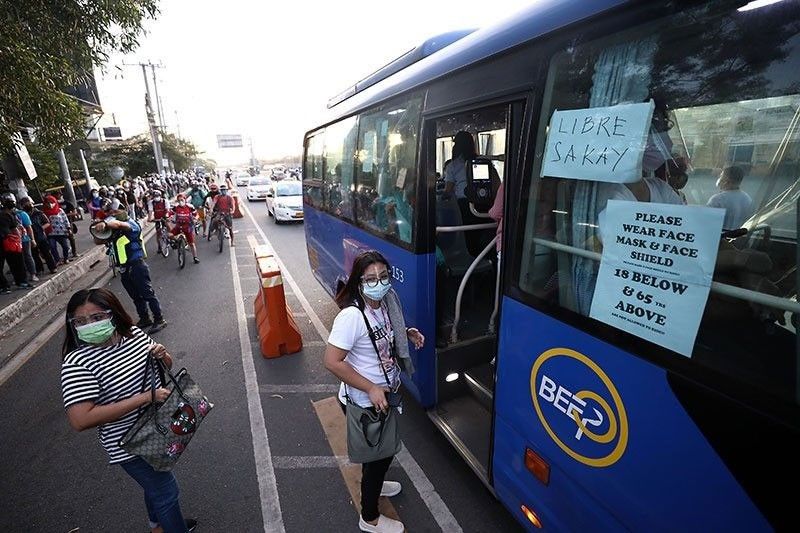Efficient Transit Advertising Philippines to Grow Your Audience
Efficient Transit Advertising Philippines to Grow Your Audience
Blog Article
How Transportation Advertising Can Change Public Transportation Spaces Into Dynamic Advertising And Marketing Platforms
Transportation marketing holds significant possibility to redefine public transport areas right into dynamic marketing systems that engage and notify. By using cutting-edge layouts such as interactive booths and electronic display screens, brand names can not just get to a diverse target market yet also enhance the overall traveler experience. This method produces a special opportunity for brand names to get in touch with customers in a setup that is usually neglected. As we check out the complex advantages and advancing methods of transportation marketing, it increases the concern of exactly how this improvement can redefine our communications with both brands and the urban atmosphere.
Benefits of Transit Marketing

In addition, transportation marketing is highly cost-effective compared to typical media. It enables advertisers to accomplish high impressions at lower prices, maximizing return on financial investment. The captive target market of commuters supplies a chance for brand names to convey their messages to people who are typically receptive during their traveling times.
Furthermore, the dynamic nature of transportation advertising enables projects to be updated frequently, making sure that messaging stays appropriate and timely. This versatility can be important in reacting to market fads or marketing occasions, maintaining the brand name top-of-mind for consumers. Finally, the prevalent visibility of transit marketing adds to brand name recall; duplicated direct exposure within familiar travel contexts strengthens brand name recognition and fosters consumer loyalty, eventually enhancing and driving sales brand online reputation.
Sorts Of Transit Marketing
Public transport systems provide various formats for advertising and marketing, each satisfying different marketing techniques and audience interaction techniques. One famous kind is external bus and train covers, which cover the whole lorry and develop a mobile billboard effect, enabling for high exposure in city environments. These wraps can capture interest as they go across busy streets, getting to a diverse target market.
One more prominent layout is indoor advertising and marketing, which consists of posters, digital screens, and advertisements on transit seats. These placements involve travelers throughout their journey, reinforcing brand messaging in a constrained space. Digital displays, in certain, supply the benefit of vibrant web content, making it possible for advertisers to update messages in real-time.
Station marketing is likewise substantial, featuring posters, banners, and interactive booths within transportation stations. These ads leverage foot traffic and can target certain demographics based on location.
Finally, marketing collaborations with transportation authorities can cause distinct projects, such as themed transit experiences or occasions, improving the overall interaction with travelers. Each type of transportation marketing supplies distinctive benefits, allowing brand names to customize their method to effectively reach their target audience within the public transportation ecosystem.
Engaging Travelers Effectively
Commuters are significantly inundated with marketing messages throughout their daily journeys, making it essential for brands to involve them in innovative methods. To record focus in this crowded area, marketers must prioritize imagination and importance. Utilizing eye-catching visuals and concise messaging can substantially improve the likelihood of interaction.
Interactive aspects, such as QR codes or enhanced fact attributes, can also transform static advertisements right into immersive experiences, fostering a deeper link with the target market. Brand names should concentrate on official site resolving commuters' requirements and rate of interests, customizing messages to resonate with their way of living, whether via promos for regional companies or services created to boost their travelling experience.
Moreover, timing plays a critical duty; purposefully positioning advertisements throughout height commuting hours can maximize visibility and influence. Involving travelers successfully likewise involves leveraging social media integration, permitting guests to share their experiences or promos directly from transit systems, consequently enhancing brand reach.
Essentially, reliable involvement pivots on recognizing the traveler trip and producing compelling, interactive, and appropriate marketing experiences that not only catch attention but also drive action and loyalty. By doing so, brands can transform public transport right into a vibrant advertising platform that resonates with its audience.

Measuring Advertising And Marketing Impact
Just how can brand names precisely examine the efficiency of their advertising projects en route atmospheres? Gauging the impact of transportation marketing calls for a diverse strategy that incorporates qualitative and measurable metrics. One common approach is tracking interaction via mobile analytics, where brands can assess foot website traffic patterns and app communications before, throughout, and after projects.
Surveys can supply valuable understandings into brand recall and customer sentiment, enabling brand names to evaluate just how well their messages resonate with commuters. In addition, keeping an eye on social media interaction pertaining to specific campaigns can disclose changes in public understanding and brand name conversation.

In addition, working together with transportation agencies can improve dimension accuracy, as they usually possess thorough group data on ridership patterns. By integrating these methods, brand names can create an extensive understanding of their marketing performance, guaranteeing that their projects not only get to but also influence their target market effectively.
Future Patterns in Transportation Advertising
A significant shift is prepared for en route advertising as technological improvements and transforming consumer habits reshape the landscape. Transit Advertising Philippines. The assimilation of digital display screens and multimedias is expected to enhance involvement, permitting brands to deliver vibrant web content that reverberates with varied audiences. As public transportation systems embrace smart modern technology, marketers will certainly utilize real-time information analytics to tailor messages based upon guest demographics and actions
Additionally, augmented fact (AR) is positioned to reinvent the method travelers communicate with ads. By offering immersive experiences, AR can change a mundane trip into an appealing narrative that catches attention and cultivates brand name loyalty. This development will likely urge advertisers to develop more experiential projects that drive consumer communication.
Sustainability is one more critical Recommended Site fad influencing transportation marketing. As ecological consciousness expands, brands will progressively seek to line up with eco-friendly methods, utilizing sustainable products and promoting eco-friendly campaigns within their campaigns.
Final Thought
Finally, transportation advertising and marketing provides substantial advantages by enhancing brand name presence and engaging a restricted target market. Through different layouts, such as exterior wraps and electronic screens, it transforms mass transit right into a dynamic advertising and marketing platform. Efficient involvement strategies and robust dimension techniques even more intensify its impact. As patterns advance, the capacity for ingenious interactions in between travelers and brand names is poised to expand, ensuring that transit advertising and marketing remains an important part of modern advertising approaches.
Transit advertising holds significant capacity to redefine public transport areas into vivid advertising platforms that educate and engage. The pervasive presence why not find out more of transit advertising adds to brand name recall; duplicated exposure within familiar traveling contexts reinforces brand name recognition and cultivates customer loyalty, eventually enhancing and driving sales brand reputation.
Just how can brand names properly examine the efficiency of their advertising campaigns in transportation settings?In final thought, transit marketing offers substantial advantages by boosting brand name exposure and engaging a restricted audience. Transit Advertising Philippines. As trends evolve, the possibility for ingenious interactions in between brand names and commuters is positioned to grow, guaranteeing that transportation advertising and marketing stays a vital part of contemporary advertising and marketing techniques
Report this page